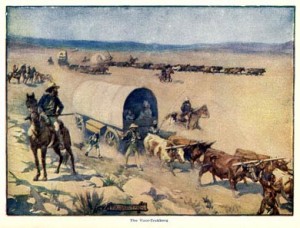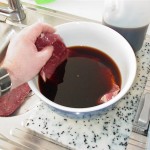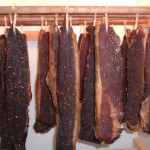As we go into Autumn and hunting season starts, the first thing that comes to most South Africans minds is, BILTONG! This is why we have decided to share a trusted biltong recipe this month.
The word BILTONG comes from the words “BIL” (BUTTOCK) or meat and ‘TONG” or strip. So basically, a strip of meat . For centuries mankind has endeavored to preserve meat. Seafarers, centuries ago, pickled meat in large wooden caskets and ate this during the months they were at sea. (No wonder they suffered from scurvy!) African folklore has it that migrating African tribesmen, herding their stock, would place strips of venison under the saddles on their horses as the chaffing would tenderize the meat and the sweat of the animals would spice it! (I’m sure this is where vegetarians were born as well!)
. For centuries mankind has endeavored to preserve meat. Seafarers, centuries ago, pickled meat in large wooden caskets and ate this during the months they were at sea. (No wonder they suffered from scurvy!) African folklore has it that migrating African tribesmen, herding their stock, would place strips of venison under the saddles on their horses as the chaffing would tenderize the meat and the sweat of the animals would spice it! (I’m sure this is where vegetarians were born as well!)
Biltong can be made from almost any type of red meat. We prefer venison as it is available to us here at Watervale Safaris and also because venison biltong just tastes great. Many butchery’s and shops supply some great biltong but there is nothing like the feeling of creating your own biltong with meat you, yourself have harvested. Why not give it a try this season!
BILTONG:
Biltong is usually made from venison, beef or ostrich meat- normally during the cool, dry months. The tender cuts, such as fillet, rump, and sirloin should be used.
For every 25kg meat:
- 1,25 kg good quality fine salt
- 150 ml (1 cup) Brown sugar
- 50ml (4 tablespoons) Bicarbonate of soda
- 20 ml (4 teaspoons) saltpeter (optional)
- 25ml (2 tablespoons) pepper
- 100g coarsely ground coriander
Note: The sugar keeps the biltong moist and the soda makes the meat tender.
Process:
- After the animal has been skinned, With a sharp knife cut along the natural dividing lines of the muscles down the length of the whole leg or portion of it.
- Cut the pieces into strips 5 to 7 cm thick, if possible with some fat on each strip.

- Mix salt, sugar, Bicarbonate of soda, saltpeter and coriander together, rub the mixture into the strips of meat.

- Layer the meat, larger pieces at the bottom in a plastic or enamel tub or container. Never use an iron or metal container as it will react with the salt. Sprinkle a little vinegar over each layer.
- Leave in a cool place for 24 – 48 hours, depending on how thick the meat is and how salty you want the biltong to be.

- Dip the biltong in a maxture of 500ml vinegar and 5Lt warm water. This makes the biltong shiny and dark

- Dry the pieces and hang them up in s-shaped hooks or pieces of string, about 5cm apart, so that the air can circulate freely around them. Leave for 2 to 3 weeks, depending on how tender the meat is.

Note:
- Do not cut the meat more then 2cm thick if the weather is not really cool.
- Biltong should be dried in a cool, dry, airy place, protected from flies and dust.
- In humid areas, biltong should be dried in a drying chamber, dehydrator or biltong box.
- To store in humid conditions, freeze biltong and only thaw enough for immediate use.
